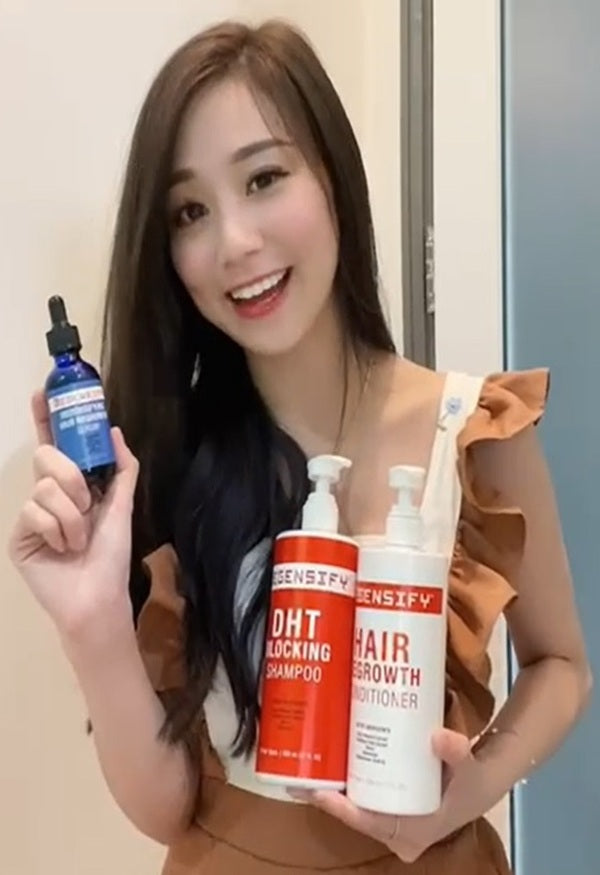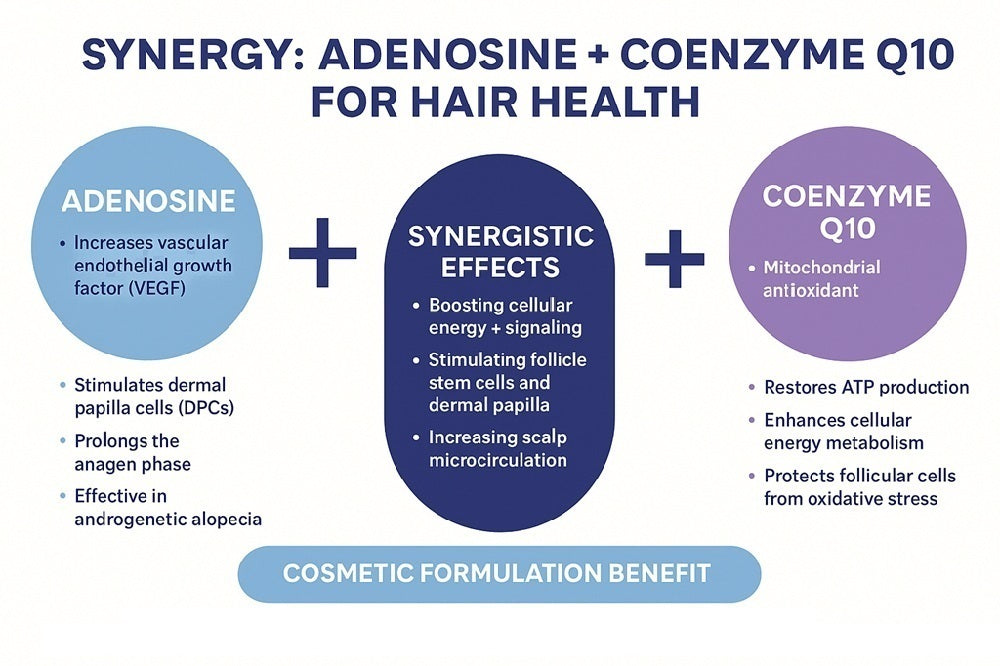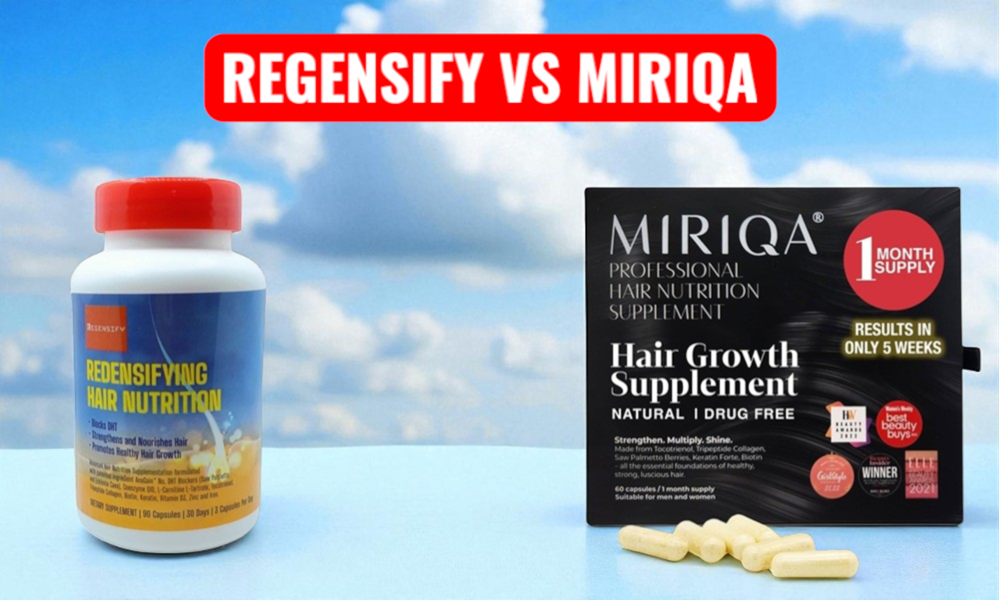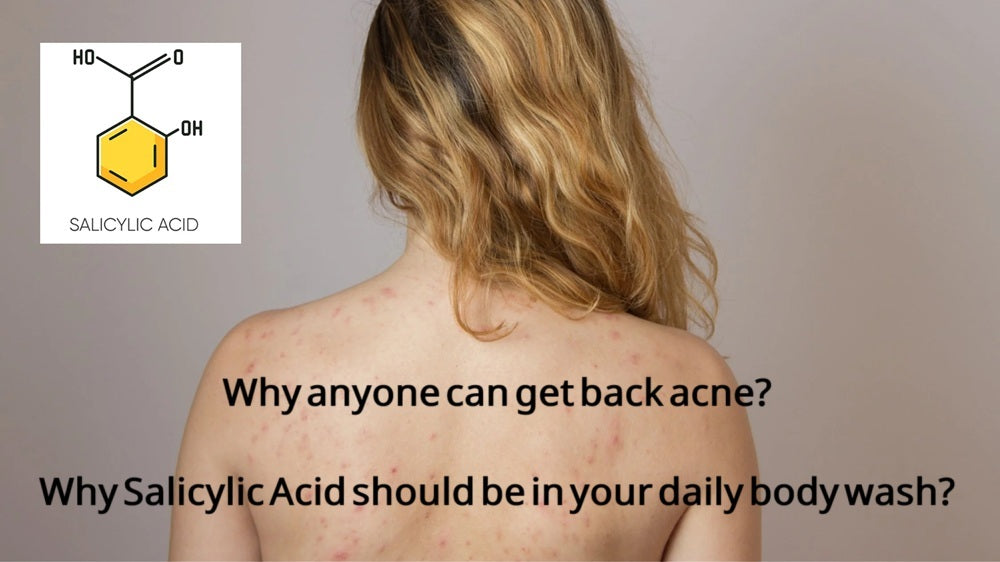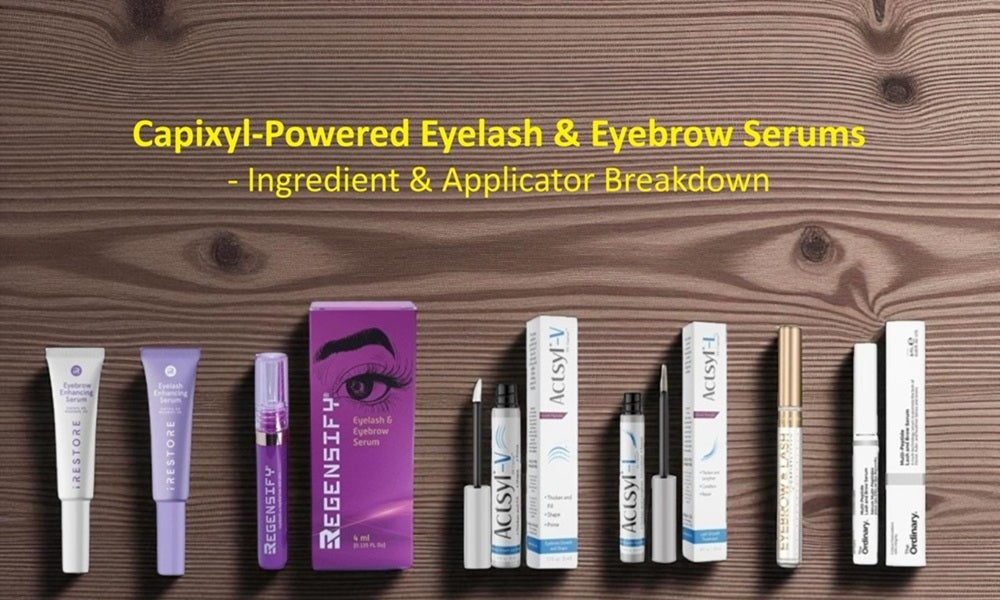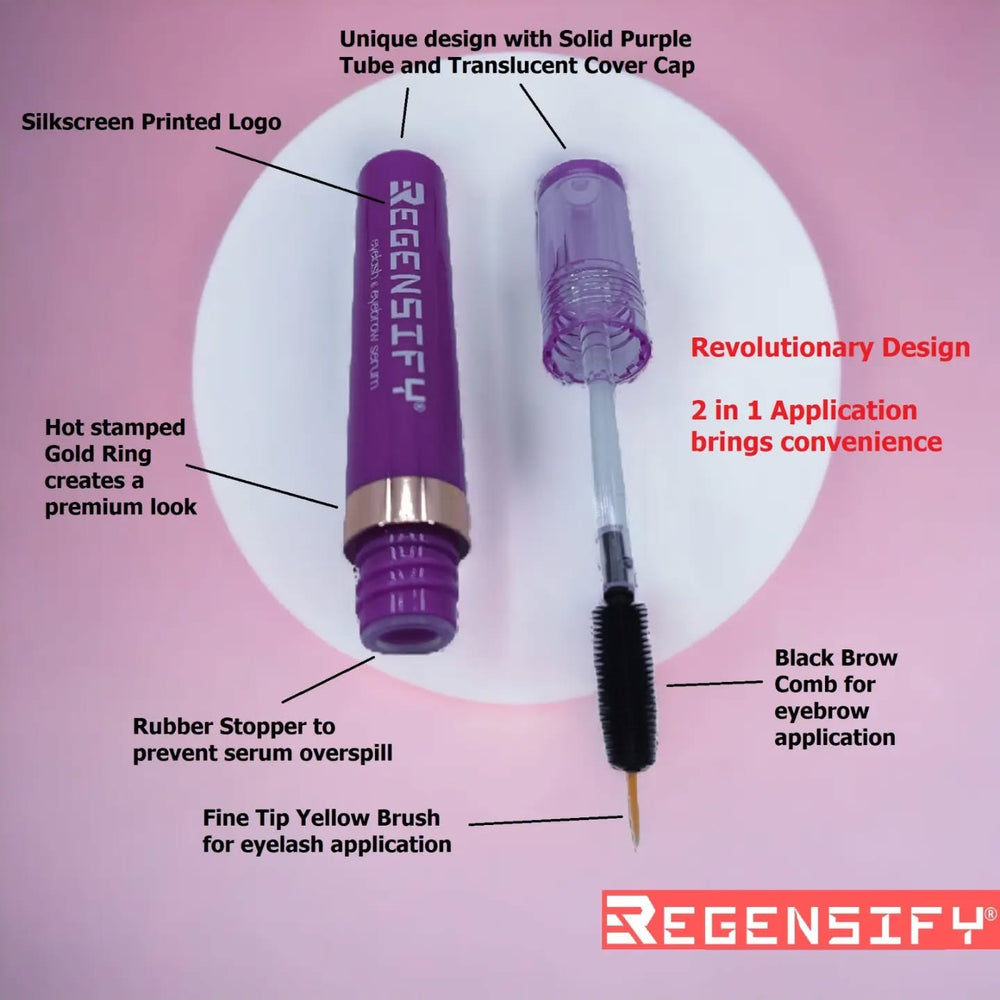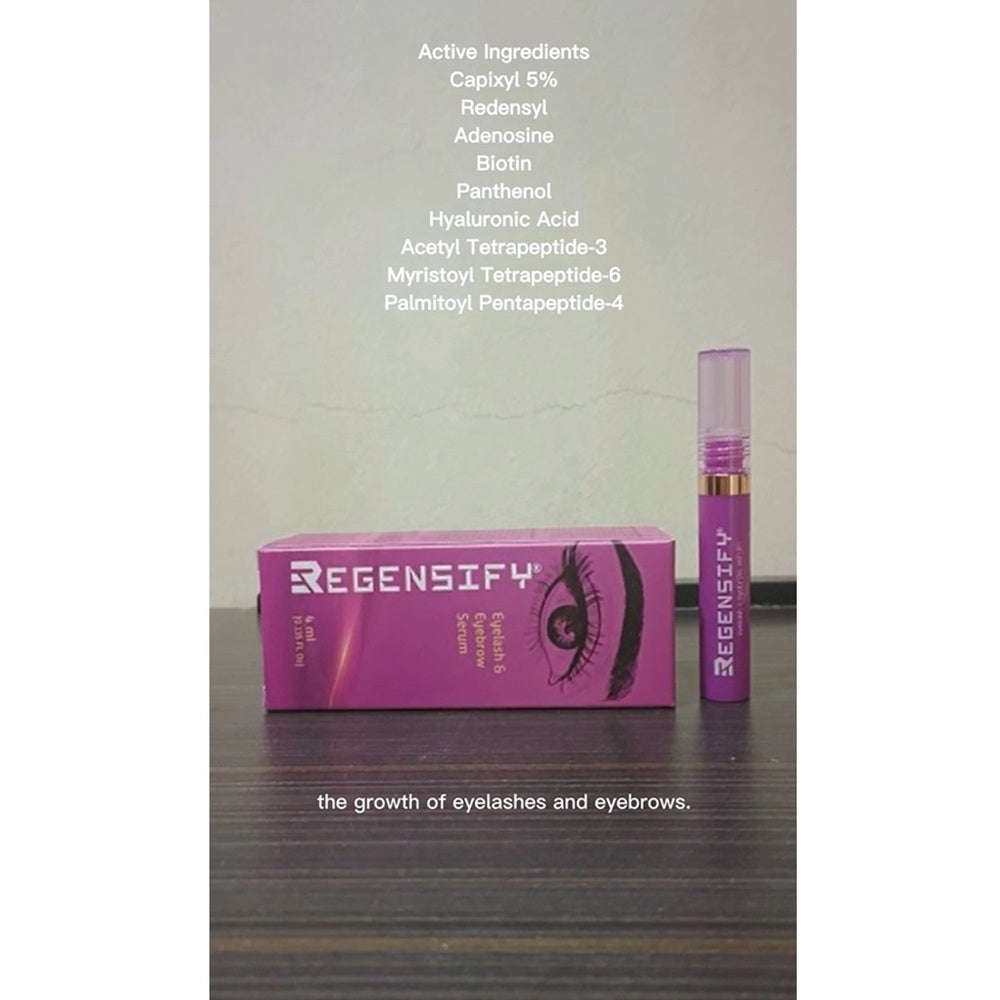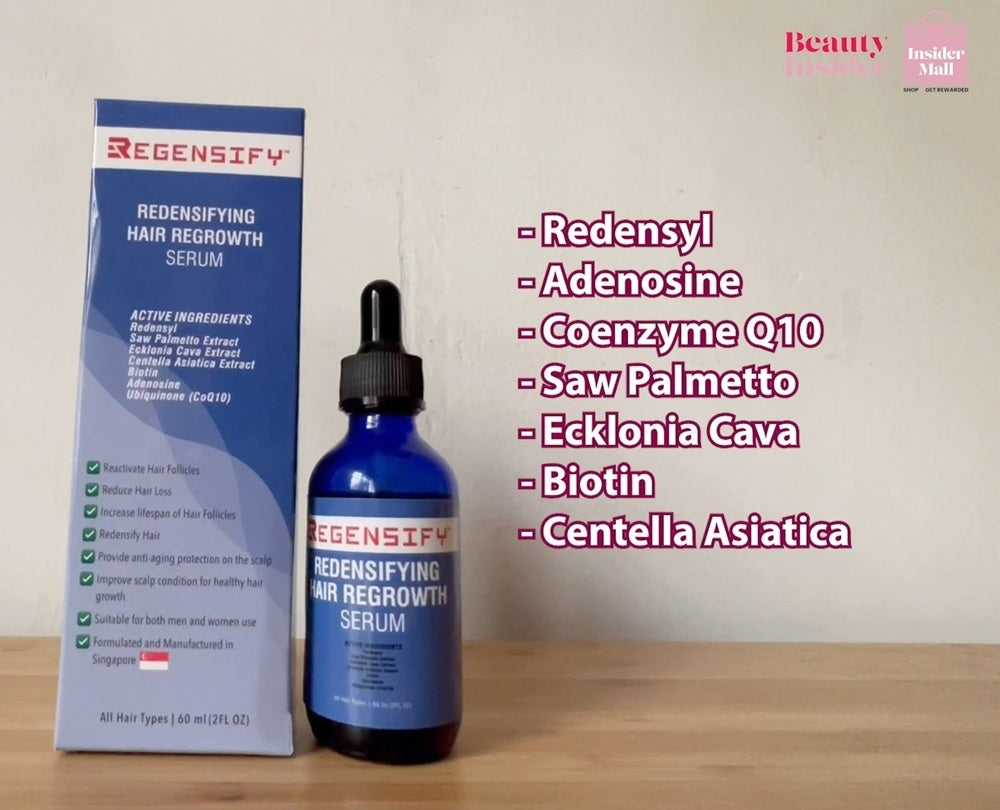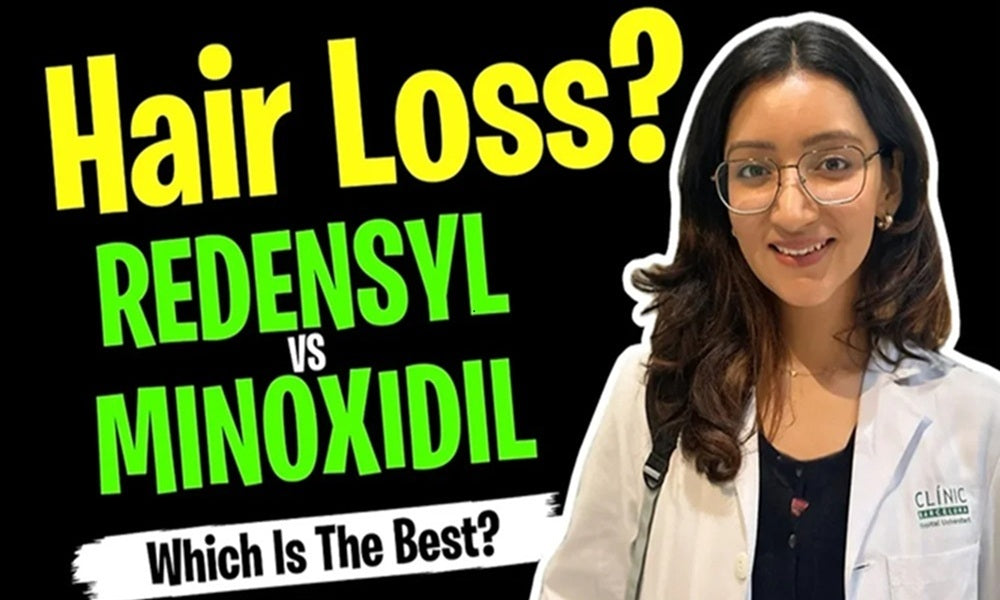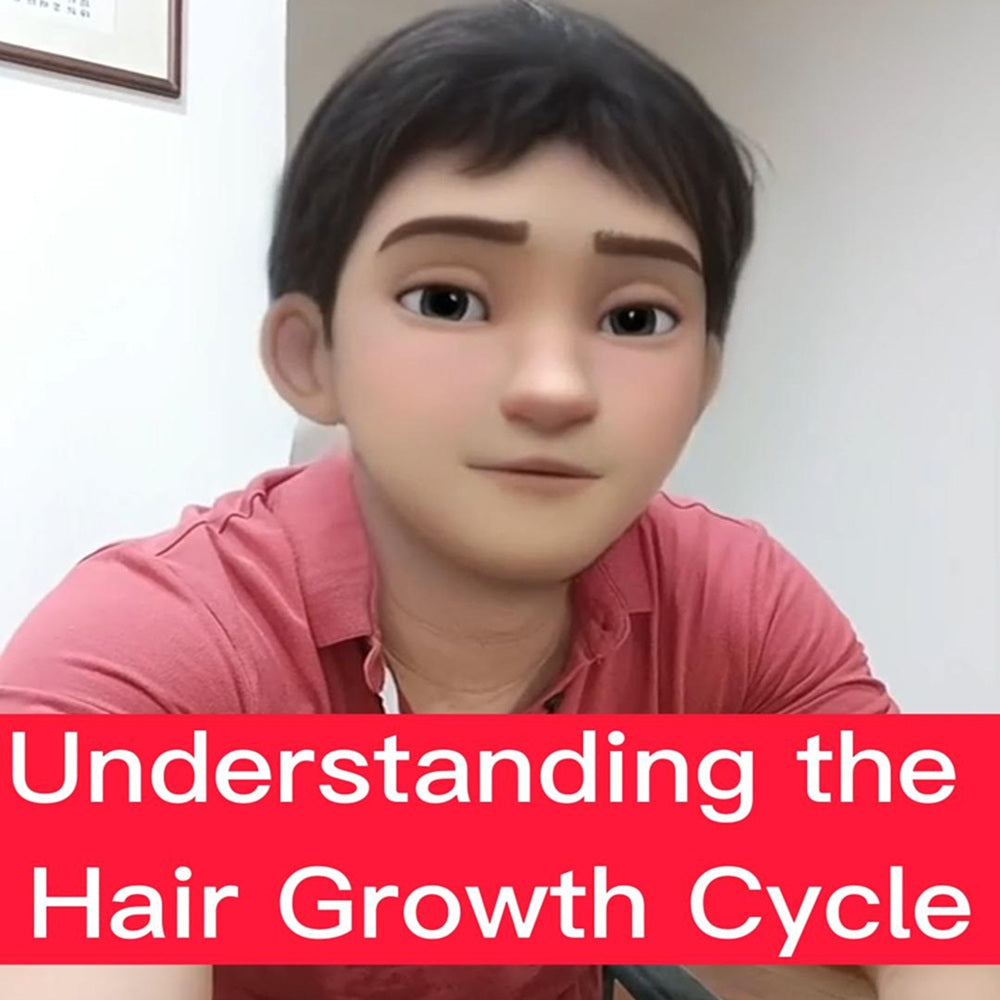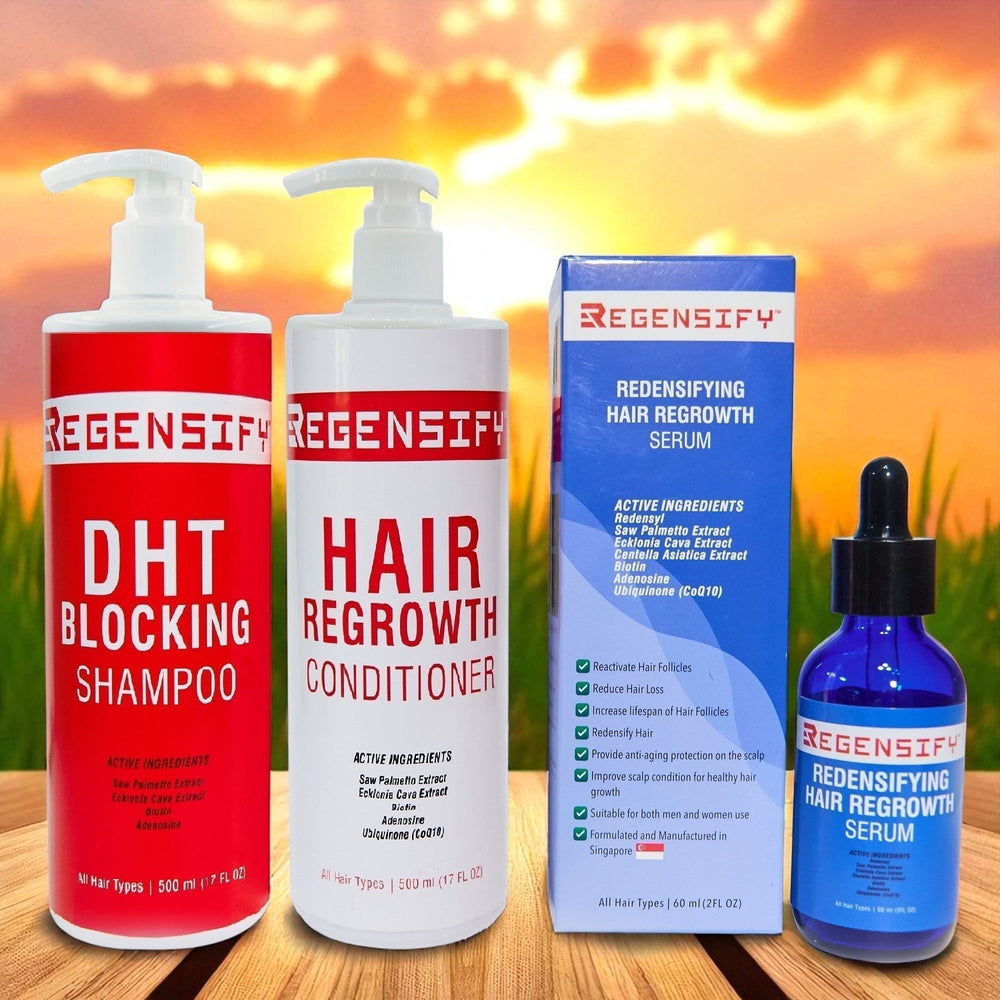WELCOME TO REGENSIFY
WELCOME TO REGENSIFY
Products
REGENSIFY Bodycare Collection

REJUVENATE YOUR BODY WITH REGENSIFY
REGENSIFY Eyecare Collection
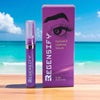
REDENSIFY YOUR LASHES AND BROWS WITH REGENSIFY
REGENSIFY Haircare Collection
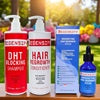
REDENSIFY YOUR HAIR WITH REGENSIFY
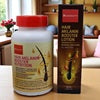
REVERSE GREY HAIR WITH REGENSIFY
Bundles
Hair Growth vs Hair Colour: Can Minoxidil Trigger Premature Greying? A new study suggests the answer is a YES.
September 13, 2025 8 min read

⚠️ Can Topical Minoxidil Cause Premature Greying?
Short answer: Yes, in some cases — it can.
While Minoxidil is widely used as a hair growth stimulant (especially in androgenetic alopecia), several clinical observations and case reports have noted the appearance or acceleration of grey or white hairs in patients using Topical Minoxidil. Some patients using 5% Topical Minoxidil have reported new hairs growing in as white or grey, even in areas where hair previously had pigment. There are anecdotal and observational reports suggesting this is more common with higher concentrations or long-term use. Published in 2024, a study done in Saudi Arabia suggests the answer is a Yes. Before we dive into the study, let's look at the scientific reasons why Topical Minoxidil may cause premature greying.
🧪 Why Minoxidil May Cause Hair Greying?
1. Melanocyte Exhaustion or Damage
-
Hair repigmentation (or color retention) depends on healthy, active melanocytes in the follicle.
-
Minoxidil increases hair follicle turnover and pushes follicles into the anagen (growth) phase, which may increase demand on melanocytes.
-
In some individuals, this can lead to melanocyte fatigue or death, resulting in non-pigmented (grey / white) hairs growing back.
2. Oxidative Stress
-
Minoxidil’s mechanism increases metabolic activity in the follicle, potentially generating more reactive oxygen species (ROS).
-
If the body has low antioxidant defenses (e.g., low catalase or CoQ10), this can oxidize melanin or damage melanocytes — leading to loss of pigmentation.
3. Impaired Melanin Transfer
-
In some cases, minoxidil may interfere with the process of melanin transfer from melanocytes to keratinocytes in the hair shaft — though this is still under investigation.
Hair Greying: A side effect that was not well declared?
Johnson & Johnson first marketed minoxidil under the brand name Rogaine in 2006. The Rogaine is the brand name marketed in the USA while the Regaine is the brand name marketed outside the USA. If you look at the original Rogaine brand marketed in the USA, it listed the following as side effect - Some people have experienced changes in hair color and / or texture. However, this side effect of colour or texture change was not indicated in the labels of the Regaine (sold outside USA) as well as other Minoxidil generic brands.

What does this suggest? Perhaps, when Topical Minoxidil was undergoing its FDA clinical trials, hair greying was a noticeable side effects in some of the users who use Minoxidil. But the original brand maker just can't explicitly say it out that Topical Minoxidil may make your hair turn grey. Else, it may turn away some customers, especially ladies. Writing it as changes in hair color and/or texture will be a more neutral tone without turning away customers away. We let the readers decide if it is a deliberate intention to mask the greying side effects of using Topical Minoxidil. Let's look at the 2024 Saudi Arabia study.
“Topical Minoxidil Reported Hair Discoloration: A Cross-Sectional Study”
What they did
-
They conducted a cross-sectional (observational) survey in Saudi Arabia, in October-November 2022.
-
Two questionnaires were used:
-
One for patients using Topical Minoxidil (or who have used it), distributed via dermatology clinics and social media.
-
One for dermatologists, about their observations in their practice.
-
-
They collected data from 453 patients and 57 dermatologists.
What they found
From the patient side:
-
26% (n = 118 out of 453) said they noticed hair greying after using topical minoxidil.
-
14.8% (n = 67) noticed other colour changes (not necessarily greying) such as hair getting lighter, turning light brown, orange, yellow, etc.
-
A large fraction (~92.6%) of those who noticed changes reported that changes appeared within 3-5 months of using Minoxidil.
-
They found that two main factors were significantly associated with hair discolouration:
-
Duration of Minoxidil use (longer use = more likely to report change).
-
Family history of hair greying.
-
From the dermatologists’ responses:
-
42.1% of the dermatologists had seen greying of hair in their patients after use of minoxidil.
-
17.5% believed that Minoxidil was the cause of greying (i.e. their interpretation).
-
Some also noted other changes in coloration (light brown, orange etc.).
Interpretation and limitations
What this doesn’t prove:
-
It is observational, cross-sectional. That means it captures associations at a point in time; it does not prove causation. Just because people saw greying after using minoxidil doesn’t mean minoxidil definitely caused it — it could be coincidence, part of normal aging, or confounded by other factors.
-
The data rely on self-report (patients’ memories), which can be biased. For example, people who expect a side effect may notice more, or recall timing imperfectly.
-
There was no objective measurement of pigment changes (e.g. biopsy, melanin count, standardized photography) to confirm altered melanocyte activity or pigment levels.
What strengthens the case:
-
The association with duration of use suggests a dose / time relationship — which is one of the hallmarks you look for when suspicious of a causal effect.
-
The correlation with family history of greying also suggests that individuals who are predisposed to greying are more likely to report changes — this could mean minoxidil might accelerate an underlying tendency.
Bottom line: this study suggests that some users do notice greying or hair colour changes after using topical minoxidil, and that longer duration + genetic predisposition make this more likely. But we don’t yet know how often this is truly caused by minoxidil, or how reversible it might be.
Possible Mechanisms (Speculative)
Since the study itself doesn't establish mechanism, here are some possibilities (hypotheses):
-
Oxidative stress: If minoxidil or its excipients lead to local oxidative stress, melanocytes might suffer damage over time.
-
Effects on melanocyte-stem cell activity: Perhaps minoxidil changes the proliferation or survival of pigment generating cells.
-
Change in hair growth cycle: Because minoxidil pushes follicles faster into anagen, maybe new hairs grow in before pigment machinery is fully “up” — leading to lighter, less pigmented hair initially (hypopigmentation) or white hairs.
-
Interaction with other factors: UV exposure, nutritional status (e.g. micronutrients), or co-use of other treatments might amplify such effects in susceptible individuals.
What This Means If You Are Using Minoxidil (or Considering It)
-
Be aware that greying or colour changes have been reported by a portion of users (≈ 1 in 4 in this survey).
-
If you have a strong family history of early greying, you might watch more carefully for changes.
-
One practical thing: photograph your hair / scalp (in consistent lighting) before you start, then after several months, to see if you can detect any subtle change.
-
If you notice undesirable colour change and it bothers you, discuss with your dermatologist: maybe stop, reduce strength / frequency, or see if any restorative pigment treatments exist.
-
Note: the benefits (slowing hair loss, possibly regrowing hair) are well established; whether the risk of greying outweighs that depends on how strongly you care about hair colour vs hair density.
Let's look at the Tables

If you look at Table 2 below, the statistics shows 26.84% of the female noticed hair greying and 24.29% of the male noticed hair greying after using Topical Minoxidil. So overall it is about 1 in 4 users.

Hair Greying and Age: What the Data Shows
If you look at Table 3 below, the Saudi Arabia study deduced that the likelihood of noticing hair greying after using Topical Minoxidil increases with age:
| Age Group | Percentage Reporting Hair Greying |
|---|---|
| <25 | Very low (10+%) |
| 25–34 | 35.38% |
| 35–44 | 55.56% |
| 45–64 | 50% |
These results suggest:
-
Younger users (<25) have a very low probability of experiencing grey hair after using Minoxidil.
-
Middle-aged users (35 and above) are more likely to notice greying, possibly because older follicles are already closer to their natural greying threshold.
-
While grey hairs are largely inevitable with aging, topical Minoxidil may accelerate the appearance of grey hairs in predisposed individuals rather than causing them outright.
This table-based approach allows readers to see the trend clearly, reinforcing your guidance that younger users can generally use Minoxidil with low risk of hair greying.


If you look at the survey on 57 dermatologists for Table 5 and Table 6, 42.1% of the dermatologists do observe grey hair on their patients after using Minoxidil and 17.5% of the dermatologists do think that the grey hair is caused by Minoxidil.


Open Questions & What We Need to Learn More
-
Is the greying reversible if you stop minoxidil?
-
Objective measurement: histology / pigment analysis to confirm that melanin is decreased, or melanocyte count changes.
-
Controlled trials: ideally, randomized controlled trials or prospective cohorts that measure hair pigmentation over time in people using vs not using minoxidil.
-
Dose / strength relations: does higher concentration (5 % vs 2 % solution/foam) increase risk?
-
Role of excipients / formulation: perhaps some vehicle bases or preservatives/propellants contribute.
-
Demographics: does ethnicity, age, baseline pigmentation, UV exposure, nutrition (vitamins, minerals) matter?
Oral Minoxidil vs Topical Minoxidil
So far, the reports of premature greying linked to Minoxidil are almost entirely associated with Topical Minoxidil use. The proposed mechanism is that Topical Minoxidil increases scalp hydrogen peroxide (H₂O₂) or oxidative stress locally, which may damage melanocytes in the hair follicle, leading to pigment loss.
For Oral Minoxidil, things are different:
-
It works systemically as a vasodilator, improving blood flow to hair follicles.
-
It doesn’t create the same localized oxidative stress on the scalp as topical minoxidil solution might.
-
So far, there are no strong clinical reports linking Oral Minoxidil to premature greying.
👉 In summary:
-
Topical Minoxidil → rare cases of greying reported (likely due to oxidative stress at the follicle).
-
Oral Minoxidil → not reported to cause greying; its risks are more about systemic side effects (e.g., swelling, heart-related issues, hypertrichosis).
Consider alternate application between Topical Minoxidil with another serum
One way to prevent getting grey hair from Topical Minoxidil is consider alternating Topical Minoxidil with another serum such as our REGENSIFY Redensifying Hair Regrowth serum. In another blog post, we look at how Adenosine + CoQ10 may be able to help prevent grey hairs. Our REGENSIFY Redensifying Hair Regrowth serum contains both Adenosine and CoQ10. Alternating the different serums on different days will reduce the side effects of Topical Minoxidil.
✨ The Bottom Line
First of all, we are not creating any fearmongering about Minoxidil. Here are our views and suggestions:
✅ If you are still young (under 25) regardless male or female, go ahead and try Topical Minoxidil. Topical Minoxidil should still work well for you when you are still young and especially trying it for the first time.
✅ If you are a guy, it is still better to have more hairs, even if it is grey than being bald. So, there is no harm using Topical Minoxidil for guys.
✅ If you are a middle age guy (above 35) and healthy with no history of heart and blood problems, you can consider trying Oral Minoxidil instead of Topical Minoxidil., especially if Topical Minoxidil may not work as well as before. However, do consider visit a dermatologist for advise on the recommended dosage of Oral Minoxidil. You should NOT take oral minoxidil without the advise of a doctor. Alternately, consider alternating between Topical Minoxidil with our REGENSIFY Redensifying Hair Regrowth serum.
✅ For ladies under the age of 35, you can still give Topical Minoxidil a try. If not, you can consider alternating between Topical Minoxidil with another serum such as our REGENSIFY Redensifying Hair Regrowth serum.
✅ For ladies above 35 and if hair greying is a concern, then we suggest don't use Topical Minoxidil and try alternative serum such as our REGENSIFY Redensifying Hair Regrowth serum. We do not advise ladies using Oral Minoxidil as Oral Minoxidil may cause unwanted facial and body hairs.
✅ Alternatively, consider seeing an aesthetic doctor and do aesthetic treatments such as PRP and mesotherapy injections to maintain or grow back your hair. (That comes with a higher price)
✅ And touchwood, if you do get grey hairs after using Topical Minoxidil, you can consider using our REGENSIFY Hair Melanin Booster Lotion and REGENSIFY Hair Melanin Booster Nutrition to help you recover the hair pigmentation. (But please treat the grey hairs early and do NOT wait too long).
REDENSIFY YOUR HAIR WITH REGENSIFY
REVERSE GREY HAIR WITH REGENSIFY
You can read the clinical study done in Saudi Arabia here.
DOWNLOAD Topical minoxidil reported hair discoloration: a cross-sectional study
Disclaimer: All brand names and trademarks mentioned are the property of their respective owners. This article is intended for educational and informational purposes only, based on publicly available data and clinical studies.
Leave a comment
Recent Articles
-
Dutasteride vs Finasteride vs Oral Minoxidil: Latest Insights for Male Pattern Hair Loss
October 07, 2025
-
Kordel's vs REGENSIFY vs Trichoderm: The Ultimate Melatine Supplement
September 24, 2025
-
Battle of the Anti-Grey Titans: REGENSIFY Lotion vs Trichoderm Serum
September 22, 2025
-
Melatine®: The Black Sheep Secret to Fighting Grey Hair Naturally
September 20, 2025
-
The Ultimate Anti-Grey Trio: Greyverse + Darkenyl + MelanoGray. Repair, Fuel and Protect.
September 19, 2025
-
Darkenyl + MelanoGray: Double Defense Against Grey Hairs
September 16, 2025
-
Tyrosine and Grey Hair — Oral vs Topical Solutions
September 15, 2025
-
Hair Growth vs Hair Colour: Can Minoxidil Trigger Premature Greying? A new study suggests the answer is a YES.
September 13, 2025
-
Synergy: Adenosine and Coenzyme Q10: How They Help Prevent Grey Hair
September 10, 2025
-
REGENSIFY VS VIDA GLOW - Which AnaGain™ Nu formula works best to prevent hair loss?
September 01, 2025
Latest REGENSIFY Blog Posts
Share this product
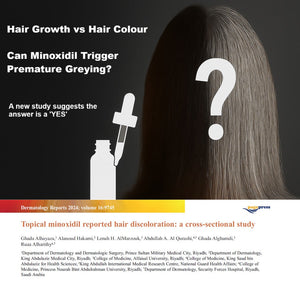
Hair Growth vs. Hair Colour: Can Minoxidil Trigger Premature Greying?
Topical Minoxidil reported hair discoloration: a cross-sectional study - a study done in Saudi Arabia suggests that Minoxidil may trigger premature greying.
